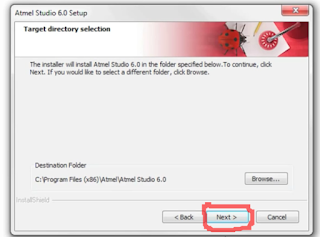In the previous article, we learn why AVR microcontrollers are so popular for designing embedded system projects. We have got the basic knowledge of ATmega16 Pin description and other required data through its datasheet. Now we can move forward to code our microcontroller. So In this article, we are going to install and setup the Atmel studio.
 |
Source: ATMEL
|
HOW TO INSTALL ATMEL STUDIO
Those who have been using an earlier version of Atmel studio can realize that there are not so much difference between the new version of Atmel studio except the awesome UI. To download the atmel studio first you have to go to the atmel website or simply click here. There you may see two option for downloading atmel studio like this:
Software Description
1 Atmel studio (latest version name) eg. Atmel studio 7.0 (build 634) web installer (recommended)
2.38 MB, Required internet access during installation
2 Atmel studio 7.0 (build 634) offline installer
734 MB, No internet access required during installation
Click any one option that you want to install and register your email id as a guest user or create an atmel account. Now go to your email account and click on the download link send by atmel.
After downloading is completed then double-click on the installation file to install atmel studio. If you have got already installed Visual Studio then it will not install or if you do not have visual studio install on your desktop then first it install it. Now you just click on next button till installation won't be finished.
When visual studio installation is completed then it installs atmel studio.Accept the terms of the license and click next.
Now click next once again as shown.
Now once again click on next button and installing will start as shown.
Now wait for a while and click on finish button in next dialogue box. Now atmel studio installation is completed and atmel studio will be installed on your desktop.
Now you have successfully completed installation of atmel studio and ready to code your AVR microcontroller. In the next article, we set up the atmel studio to write our first code for AVR microcontroller. Hope you like this article and if you have got any problem then comment below.






